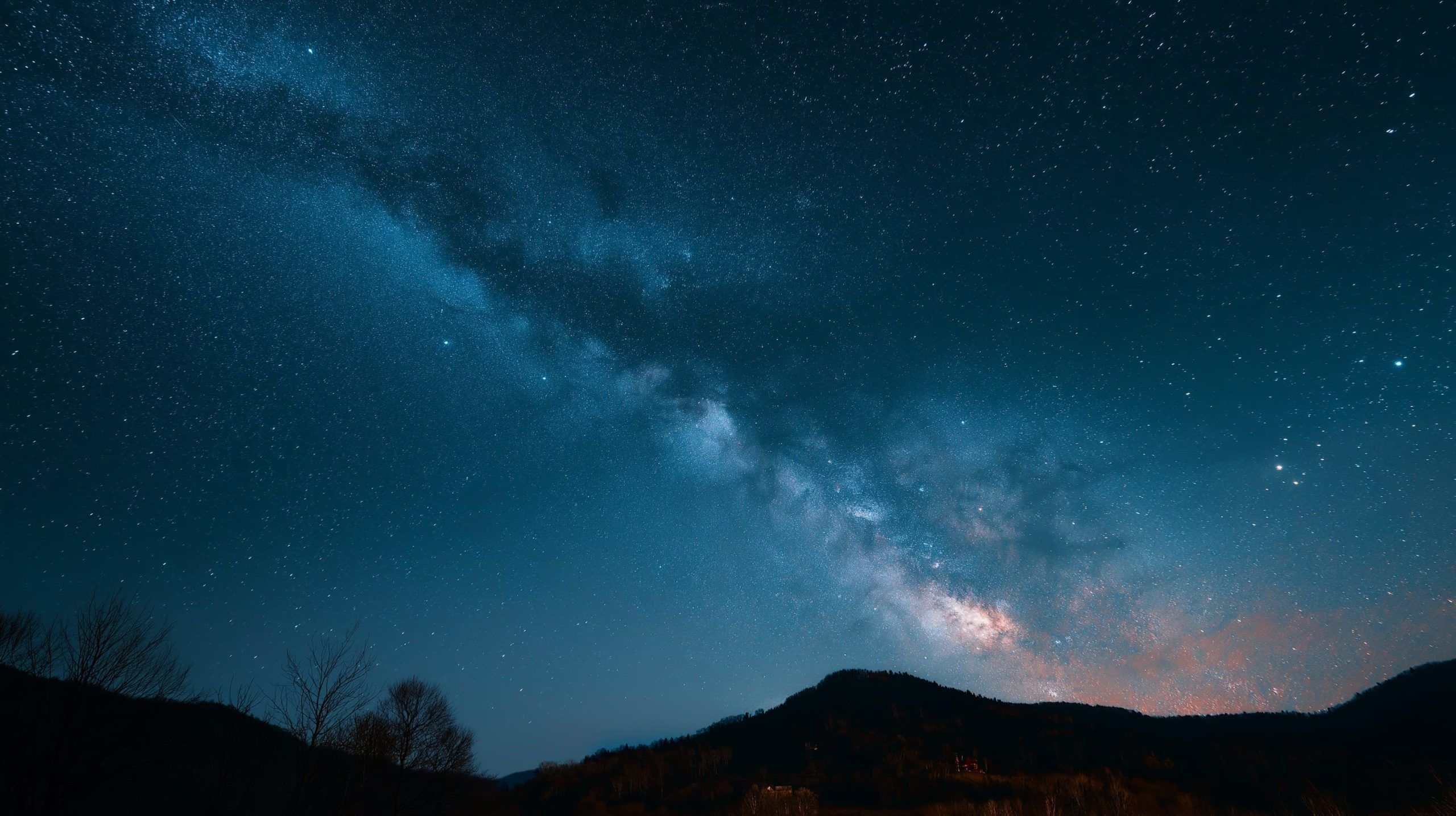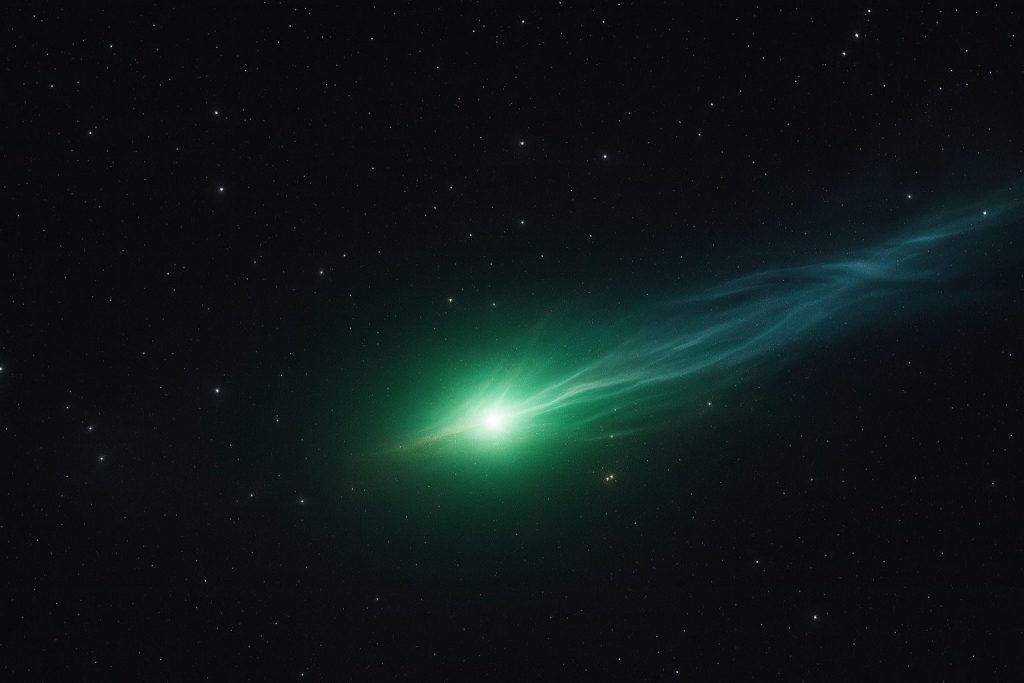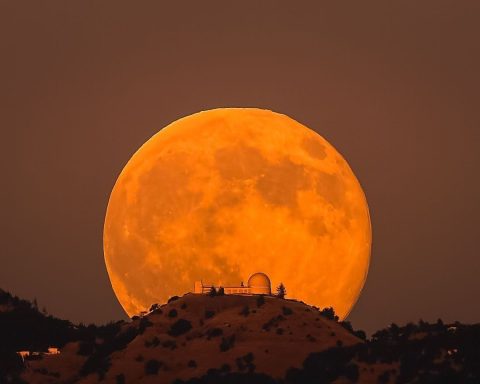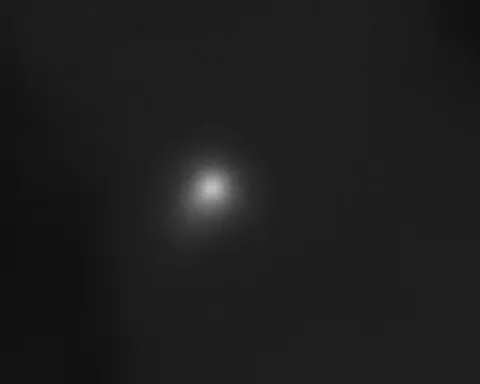If you look up tonight, November 24, 2025, the night sky offers a young crescent Moon, a dramatic Saturn with almost invisible rings, a tight Venus–Mercury pairing at dawn, lingering meteor activity and even a rare lunar occultation of a bright star for some parts of the world. Here’s your complete, Google News–ready guide to what’s happening above you right now.
Quick highlights for 24 November 2025
- Moon: Waxing crescent, ~15% illuminated, low in the west after sunset. [1]
- Planets at dusk:
- Planets at dawn:
- Venus & Mercury in a close conjunction, very low in the east-southeast before sunrise. [4]
- Special event: Lunar occultation of Sigma Sagittarii (Nunki) – the Moon passes directly in front of this bright star for observers in a narrow path including the Falkland Islands and parts of the South Atlantic; others see a close pairing. [5]
- Meteor showers: Leonids and Northern Taurids still active, though past peak, so expect a modest number of meteors under dark skies. [6]
- Telescopic bonus: Comet C/2025 A6 (Lemmon) around magnitude 9–9.5 in Ophiuchus, a target for small to medium telescopes. [7]
All exact times depend on your location, but the pattern of what’s visible is similar worldwide.
The Moon tonight: slim crescent in the evening twilight
Tonight’s Moon is a waxing crescent, only about 15% illuminated and roughly 4 days past new. [8]
- Where to look:
- Shortly after sunset, scan the southwest to west.
- The crescent will be low, setting within a couple of hours of sunset, so you’ll want an unobstructed horizon.
- What you’ll see:
- A thin “smile” of light with the rest of the lunar disk dimly aglow in Earthshine—sunlight reflected from Earth back onto the Moon.
- Through binoculars, the strong contrast between the bright terminator and the dark maria makes craters and mountains pop beautifully at this phase.
Many local sky notes also place the Moon tonight in Capricornus, adding a subtle background of faint stars around it. [9]
Planets: a dawn rendezvous and evening showpieces
Venus and Mercury: a tight dawn pairing
We’re in the middle of a rare chance to see Venus and Mercury close together in the morning sky.
- When: About 30–45 minutes before local sunrise on November 24.
- Where: Very low in the east or east-southeast.
Sky & Telescope notes that this week Mercury (about magnitude 0) is just 1.5° from Venus on the morning of the 24th, sitting slightly left or lower-left of the much brighter Venus (about magnitude –3.9). [10]
EarthSky and other guides highlight that Mercury will climb higher while Venus sinks toward the Sun’s glare as November ends. [11]
How to see them safely:
- Pick a location with a clear, flat horizon to the east.
- Start looking when the sky is still dim but before the Sun is above the horizon; never use binoculars once the Sun is up.
- In the Northern Hemisphere, they’ll be very low; observers farther south get a slightly easier view.
If you catch this pairing, you’re seeing a configuration that only lasts a few days and won’t repeat in quite this way for years.
Saturn: the planet with almost invisible rings
Saturn is one of tonight’s most intriguing telescopic targets because its famous rings are effectively “turned off.”
- Why: NASA’s November skywatching bulletin highlights that on November 23 Saturn’s rings reach a nearly edge‑on orientation to Earth. [12]
- An in‑depth piece from Universe Space Tech explains that this ring alignment makes the rings appear to “practically disappear” in small telescopes, a spectacle that won’t repeat until 2038. [13]
- HighPoint Scientific’s November guide echoes this, noting that by November 23 the rings will look so narrow that only larger amateur scopes will detect them. [14]
Tonight, November 24, that effect is still very much in play:
- Look toward the south in the evening; Saturn glows with a steady, pale-yellow light among the stars of Aquarius. [15]
- In a small telescope, Saturn may look like a slightly flattened disk or show only the thinnest hint of rings.
It’s a once‑in‑a‑decade–plus perspective on a world we normally see flamboyantly ringed.
Jupiter and Uranus: late‑night giants
While Saturn dominates the early evening, Jupiter and Uranus take over later:
- Jupiter is blazing bright, rising in the east and climbing high through the late evening and early morning hours, near the constellation Gemini and the bright star Procyon. [16]
- Uranus reached opposition on November 21, making this week one of the best times all year to see it. HighPoint’s guide notes that Uranus is near the Pleiades star cluster and visible as a small, aquamarine disk in modest telescopes at around 100× magnification. [17]
If you have binoculars or a telescope and reasonably dark skies, hunting down Uranus tonight is a satisfying challenge.
A rare treat: lunar occultation of Sigma Sagittarii (Nunki)
One of the headline events around this date is a lunar occultation of Sigma Sagittarii, also known as Nunki, the bright star forming part of the “handle” of the Teapot in Sagittarius.
- According to In‑The‑Sky.org and multiple astronomical event calendars, the Moon passes directly in front of Nunki on November 24, 2025 (UTC), producing an occultation visible from a narrow band including the Falkland Islands, South Georgia and nearby ocean regions. [18]
- Elsewhere, the Moon and Nunki appear in very close conjunction, making for a striking pairing in binoculars.
Typical event windows span a couple of hours around late evening UTC (for example, around 23:00–01:30 UTC), but local clock times vary significantly with longitude and time zone.
How to watch:
- If you’re within or near the visibility path, use an astronomy app or planetarium software to get precise ingress/egress times for your location.
- Use binoculars or a small telescope and watch the star either vanish behind the Moon’s dark limb or reappear from behind the bright crescent.
Even if you’re outside the occultation zone, seeing a bright star snuggled up to the crescent Moon in Sagittarius is a beautiful sight.
Meteors: Leonids and Taurids still hanging on
No major meteor shower peaks tonight, but the sky is not empty of “shooting stars.”
- NASA’s November skywatching guide notes that the Leonid meteor shower peaked around November 16–18, but the shower remains active from November 3 to December 2. [19]
- The American Meteor Society lists both the Leonids (active to November 30) and the Northern Taurids (active to December 10) as current showers, though at modest rates. [20]
What this means for tonight:
- Under dark, moonless patches of sky away from city lights, you might see a handful of meteors per hour after midnight.
- Leonids radiate from the constellation Leo in the east, while Taurids come from Taurus; in practice you can just face the darkest part of the sky and relax.
The thin crescent Moon sets early, so it doesn’t wash out the sky, which slightly improves your chances.
Comets and faint fuzzies
Comet C/2025 A6 (Lemmon)
If you have a telescope, tonight is a good opportunity to go comet hunting.
Ephemeris data from TheSkyLive shows that Comet C/2025 A6 (Lemmon) is: [21]
- Located in Ophiuchus on November 24.
- Around magnitude 9.3, which makes it a faint telescopic object, not visible to the naked eye.
- Relatively low in the sky from Greenwich‑like latitudes, with a maximum altitude of only about 15° in daytime; visibility for you will depend strongly on your location and local horizon.
With a medium‑aperture telescope under dark skies, you might glimpse it as a small, diffuse glow with a faint tail.
Interstellar comet 3I/ATLAS: the big story behind the scenes
Another comet dominating space news this week is 3I/ATLAS, the third known interstellar object to visit our Solar System.
- NASA has been coordinating a solar‑system–wide observing campaign, with multiple spacecraft—including Mars orbiters and the MAVEN mission—capturing images of 3I/ATLAS as it passed near Mars in October. [22]
- News outlets report that NASA has now confirmed 3I/ATLAS is a natural comet, not alien technology, despite a flurry of online speculation. [23]
Although 3I/ATLAS itself requires serious equipment to see and won’t be spectacular to casual skywatchers tonight, it’s an extraordinary reminder that some of the objects we study in the sky come from entirely different star systems.
Deep‑sky objects: galaxies and clusters to chase
If your skies are dark and you have binoculars or a telescope, November’s sky is rich in classic deep‑sky targets:
- HighPoint Scientific’s November guide recommends the Triangulum Galaxy (M33), a delicate spiral in Triangulum that is a prize astrophotography subject, and the beautiful Double Cluster (NGC 869/884) between Cassiopeia and Perseus, which is gorgeous even in binoculars. [24]
Pair these with the Pleiades, Orion Nebula (later in the night), and the Andromeda Galaxy for a deep‑sky tour to complement tonight’s planetary and lunar sights.
Space & astronomy news dated 24 November 2025
Beyond what you can see directly, November 24 is a busy day for space science headlines that tie into the night sky:
- Milky Way’s largest neighbor in stunning detail – Universe Space Tech showcases a new NOIRLab image of the Large Magellanic Cloud, highlighting its size (about 32,000 light‑years across) and the star‑forming Tarantula Nebula. [25]
- New Hubble image of star‑forming cloud N159 – Astronomers using the Hubble Space Telescope released a dramatic image of part of N159, a huge star‑forming region in the constellation Dorado, about 160,000 light‑years away. [26]
- Is there liquid water under Mars’ polar caps? – A fresh analysis of radar data, summarized by Universe Space Tech, revisits bright reflections beneath Mars’ southern ice cap and questions whether they really indicate liquid water or could be explained by exotic ices and clays. [27]
- A nearby super‑Earth in the habitable zone – International coverage highlights the discovery of GJ 251 c, a super‑Earth about 18 light‑years away, orbiting in the habitable zone of a nearby M‑dwarf star and considered a prime target for future direct imaging missions. [28]
- Saturn’s disappearing rings in focus – Universe Space Tech’s piece on the November 23 ring-plane alignment(published today) underlines how unusual tonight’s edge‑on Saturn really is and notes the next similar opportunity won’t come until 2038. [29]
These stories don’t change what you see tonight, but they deepen the context for every star and planet you look at.
How to get the most from tonight’s sky
A few practical tips to make tonight’s observing session rewarding:
- Know your times
- Check a local sky app or observatory site for your sunset and sunrise times, plus local times for Venus/Mercury visibility and Moon‑set.
- Choose your window
- Early evening: Crescent Moon + Saturn.
- Mid‑evening to midnight: Jupiter, deep‑sky objects.
- Post‑midnight: Best time for Leonid and Taurid meteors.
- Pre‑dawn: Venus–Mercury conjunction low in the east.
- Escape bright lights
- Even a short drive away from city glare can dramatically improve your view of the Milky Way, faint meteors and deep‑sky targets.
- Let your eyes adapt
- Give yourself 20–30 minutes in dim light; avoid bright phone screens or use a red‑light night mode.
- Use binoculars if you have them
- They’re perfect for:
- Earthshine on the crescent Moon
- The tight Venus–Mercury pairing
- The Double Cluster, Pleiades, and bright star fields in Sagittarius
- They’re perfect for:
- Stay safe at dawn
- When chasing Mercury and Venus, stop using optical aids well before the Sun rises above the horizon.
Tonight’s take‑away
Whether you’re stepping outside for five minutes or planning a full observing session, November 24, 2025 offers a rare mix: a delicate crescent Moon, Saturn in a once‑every‑decade pose, a tight Mercury–Venus dance at dawn, lingering meteors and a star briefly hidden by the Moon in parts of the world—set against a backdrop of new discoveries about galaxies, exoplanets and interstellar comets.
Clear skies, and enjoy tonight’s show overhead.
References
1. www.moongiant.com, 2. earthsky.org, 3. earthsky.org, 4. skyandtelescope.org, 5. in-the-sky.org, 6. science.nasa.gov, 7. theskylive.com, 8. www.moongiant.com, 9. lunaf.com, 10. skyandtelescope.org, 11. earthsky.org, 12. science.nasa.gov, 13. universemagazine.com, 14. www.highpointscientific.com, 15. earthsky.org, 16. earthsky.org, 17. www.highpointscientific.com, 18. in-the-sky.org, 19. science.nasa.gov, 20. www.amsmeteors.org, 21. theskylive.com, 22. www.nasa.gov, 23. apnews.com, 24. www.highpointscientific.com, 25. universemagazine.com, 26. www.sci.news, 27. universemagazine.com, 28. www.anews.com.tr, 29. universemagazine.com










